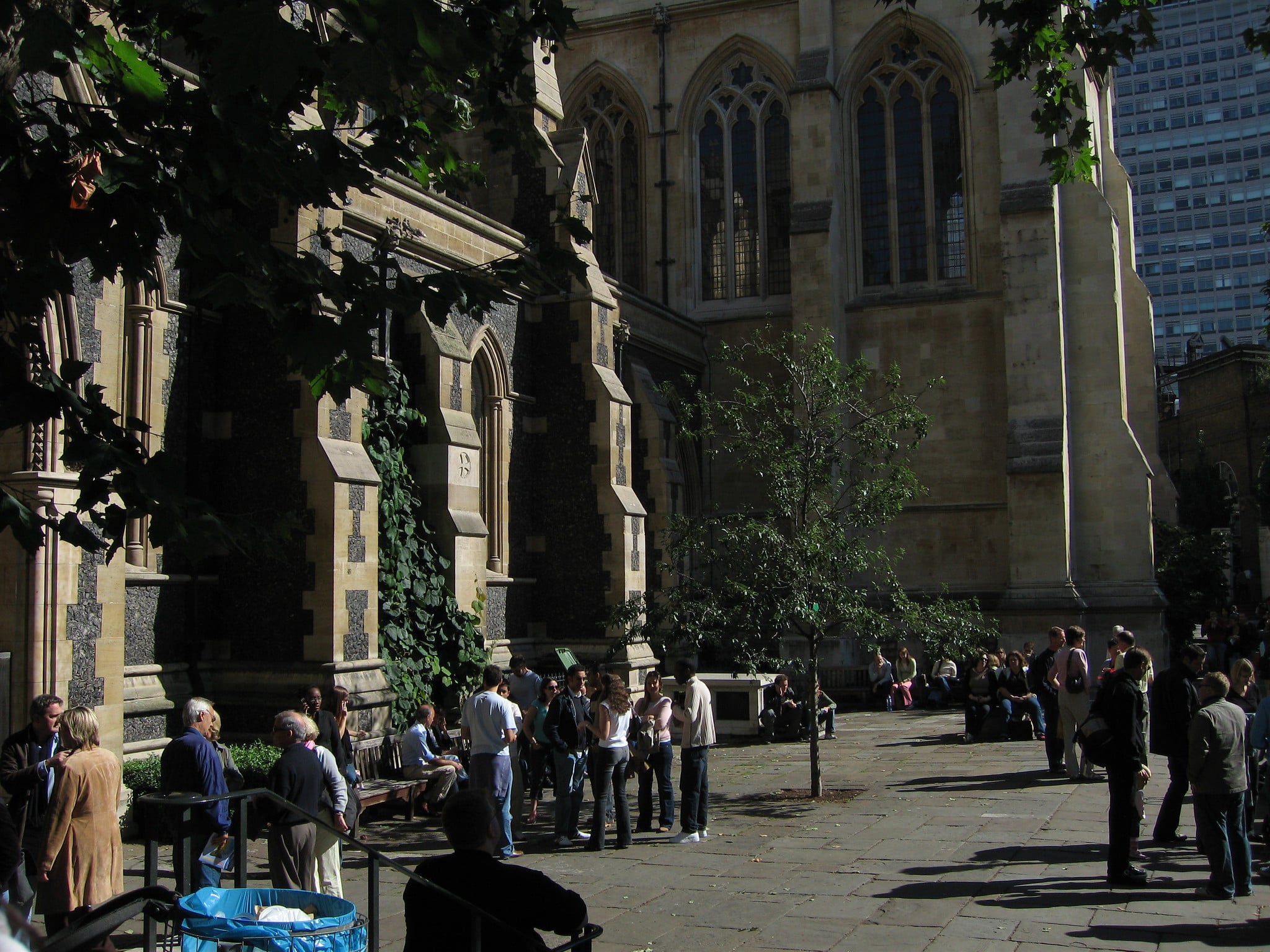The Mayflower story and the role of London's Southwark in this historic journey are deeply intertwined.
Today, I'm going to tell you all about it.
Southwark: article summary
Southwark: at a glance
Strategically located on the south side of London Bridge, opposite The CitySouthwark has a history as a place of trade and travel dating back to well before Roman times.
It has long been an internationally renowned cultural destination, renowned for its dynamic performing and visual arts, history and heritage. There are, however, two areas where of particular interest in relation to the Mayflower.
The first is the old Southwark district, where the Separatist Church was founded in 1592. It was very active in the run-up to the 1620 voyage.
It was Henry Jacob and Sabine Staresmore who started the negotiations on behalf of Leiden, and in this area lived several passengers, investors and church leaders.
The second area is Rotherhithe, where the Mayflower was based and where many of its crew lived, including its captain and co-owner.

The captain of the Mayflower lived in Southwark
Rotherhithe has a long history of shipping and shipbuilding. It was home to Christopher Jones, the ship's captain and co-owner, as well as many members of the crew.
Jones is thought to have been born in the seaside town of Harwich in 1570, the son of Christopher Jones senior, who was also a sailor and shipowner. He lived in Harwich and married twice in the port of Essex, where the Mayflower was built.
After successfully taking passengers and crew across the Atlantic, Jones died in March 1622, exhausted by his ordeal. He now rests at St Mary's Church in Rotherhithe, where a statue commemorates his role in the Mayflower story.
Southwark has close links with separatist pilgrims
Southwark's links with separatist pilgrims have their origins several decades before the departure of the Mayflower.
After the Reformation and the formation of the Anglican Church in the 16th century, it was compulsory for everyone in England to worship according to established religious rituals.
Those who refused or sought to promote independent or separatist religious gatherings were fined, imprisoned and, in some cases, imprisoned, executed for their beliefs.
Discover London's oldest Gothic church
Southwark Cathedral is located on the south bank of the River Thames, close to London Bridge. It is the mother church of the Anglican diocese of Southwark. It has been a place of Christian worship for over a thousand years, but only a cathedral. since the creation of the Diocese of Southwark in 1905.
Between 1106 and 1538, it was the church of an Augustinian priory, Southwark Priory, dedicated to the Virgin Mary. Following the dissolution of the monasteries, it became a parish church, with the new dedication of Saint-Sauveur.
The present building retains the basic form of the Gothic structure built between 1220 and 1420. a late 19th-century reconstruction.
Southwark has a pub called "The Mayflower".
"The Mayflower" is a traditional, quintessentially English pub surrounded by cobbled streets, with an outdoor jetty and cosy candlelit restaurant offering stunning river views.
Search for the ship's original 1620 mooring point, warm up by the open fire and imagine who could have been sitting in your shoes 400 years ago!
The pub contains many references to the Mayflower and Captain Christopher Jones, including the passenger list. Mayflower descendants can even sign the descendants' guest book.
Visit London's oldest market
Borough Market has a rich history, but it remains as relevant today as ever. As London's oldest market, it has been serving the people of Southwark for over a thousand years, and this extraordinary legacy is certainly an important part of its appeal.
But above all, it's a source of truly exceptional products. Many Market exhibitors are producers themselves.
Other merchants have built their reputations by seeking out small-scale artisan producers and bringing their wares to Borough.
Together, the market's stalls, stores and restaurants reflect London's status as a truly global city, with traditional British products alongside regional specialities from around the world.
You can still feel the atmosphere of the 16th century here.
People come from all over to immerse themselves in the capital's vibrant, electric culture, and there's no more typical place to set up shop than on the edge of the London Bridge.
This traditional district is just a stone's throw from the London EyeTower Bridge and London's biggest and best market, Borough Market.
Take a step back in time and discover a part of London you've never seen before.
Southwark is a historic district to discover in London. During your trip, you'll be able to enjoy the streets of this place and in the English capital.
What to do in London in 1 day, 2 days, 3 days, 5 days, a week?
Whatever the length of your stay, I invite you to download my special London guide.
It's free and in PDF format.
All you have to do is tell me below which e-mail address you'd like to receive it at.
EDIT: you can't enter your email?
Take the quiz at the top of this article and you'll be able to register your email address to receive the special London guide!
Leave a Reply